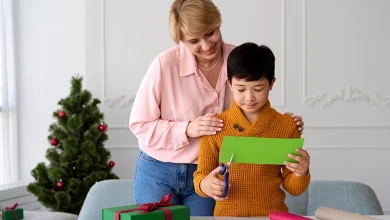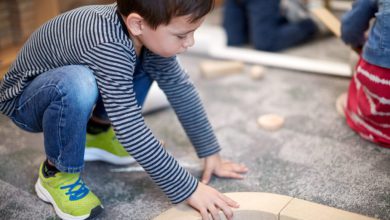Embrace the Mess!: 3 Strategies for Messy Play
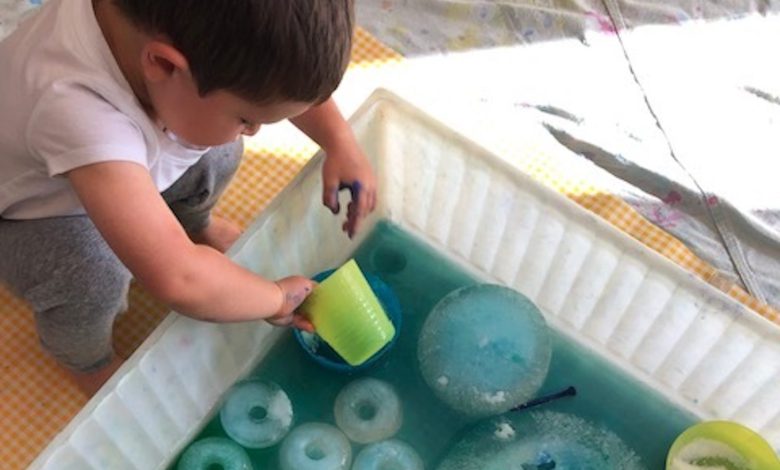
In “Embrace the Mess!: Benefits of Messy Play,” we explored some of the many benefits of messy play for children. “Messy play” is any type of play that may cause children to “get dirty” but allows them to explore sensory materials and their properties in open-ended ways. Children engaged in messy play can exercise their creativity and independence, experiment without the limitations of a finished product, and focus deeply on their discoveries without worrying about mud on their clothes or paint on the floor.
Mud on the clothes and paint on the floor? Such messy play can be intimidating to adults, for teachers and families alike. Children may benefit greatly from messy play, but adults need to balance children’s need for sensory exploration and discovery with their responsibility to provide safe, clean environments to learn and play in. Fortunately, some intentional strategies for planning experiences, supporting individual children, and communicating with children’s families can help teachers successfully offer messy play to children in their classrooms and programs.
1. Frequently Communicate With Families
 Strong family partnerships improve outcomes for young children. Frequent communication with families on the benefits of messy play can help ease their concerns and establish an understanding of how children benefit enormously when they are invited to get messy. It is particularly important to explain that although children will engage in experiences that may leave their hands dirty, the classroom environment is intentionally designed to care for children’s messy play.
Strong family partnerships improve outcomes for young children. Frequent communication with families on the benefits of messy play can help ease their concerns and establish an understanding of how children benefit enormously when they are invited to get messy. It is particularly important to explain that although children will engage in experiences that may leave their hands dirty, the classroom environment is intentionally designed to care for children’s messy play.
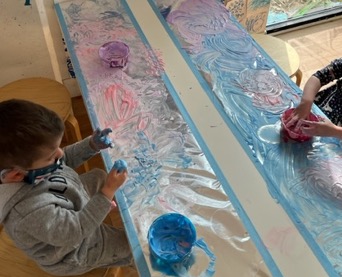 Developing clean-up expectations with families and valuing their input can also help build acceptance of messy play. When families who are uncertain about messy play visit the classroom, point out materials and classroom resources that help ensure children’s safety and comfort. For example, offering waterproof smocks will help ensure children’s clothes do not become wet or soiled during art or water activities, while consistent hand-washing routines, cleaning tools, and organized spaces demonstrate your attention to children’s health and safety.
Developing clean-up expectations with families and valuing their input can also help build acceptance of messy play. When families who are uncertain about messy play visit the classroom, point out materials and classroom resources that help ensure children’s safety and comfort. For example, offering waterproof smocks will help ensure children’s clothes do not become wet or soiled during art or water activities, while consistent hand-washing routines, cleaning tools, and organized spaces demonstrate your attention to children’s health and safety.
2. Create a Plan
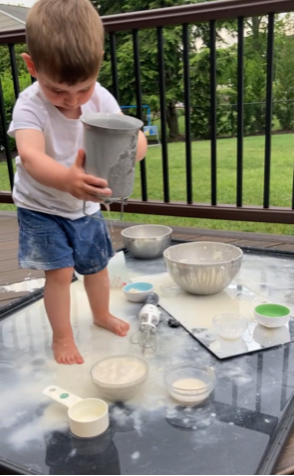 As with anything in the early childhood classroom, establishing consistent routines and expectations with children helps them engage in positive ways. Experiences may be messy, but the physical environment is not. Creating defined spaces for messy play and ensuring materials are clean, organized, and easily accessible are all essential components of establishing an atmosphere for high-quality play.
As with anything in the early childhood classroom, establishing consistent routines and expectations with children helps them engage in positive ways. Experiences may be messy, but the physical environment is not. Creating defined spaces for messy play and ensuring materials are clean, organized, and easily accessible are all essential components of establishing an atmosphere for high-quality play.
Consider, for example, securing paper for a messy finger-painting activity to an easily cleaned table with painter’s tape. Securing the paper so it cannot fall from the table, roll up at the edges, or move onto another child’s painting will both help keep the finger paint contained to the paper and the prepared area and support children to focus on the process of painting with fewer distractions. Keeping tools for washing hands (or toes!) and paint containers nearby, such as a bin of soapy water that will allow messy materials to soak, will help minimize the amount of “mess” traveling through the rest of the classroom or to children who decide not to get messy.
You may also consider placing materials on a large tray or in a bin to contain the mess, create a defined boundary, and allow for easier clean-up.
3. Meet Children Where They Are
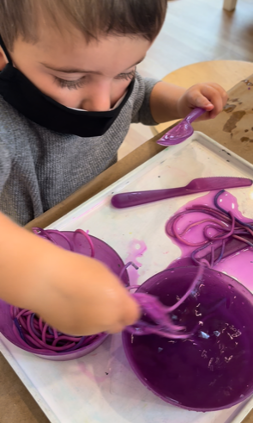
Observing how children interact with messy materials will help you respond appropriately to their needs. Not all children will want the full sensory experience of muddy hands or squishing paint. Children may enjoy some messy experiences but not others, while others may approach messy activities with enthusiasm and struggle to clean up afterwards. Be sure to respond to children as individuals and offer accommodations, such as remaining close by to offer support, including tools to engage with materials without directly touching them, or providing extra hand towels based on the children’s current sensitivity to sensory experiences.
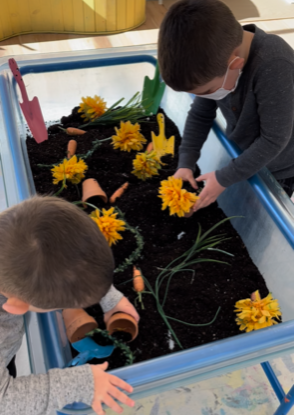 Whether you are well studied in the art of messy play or are just getting started, focusing on one experience at a time will help strengthen your observation skills, and reflecting on the experiences will allow you to use your observations to inform your practice. Remaining present and open to the possibilities will help you appreciate the joy created by your efforts to embrace the mess this fall.
Whether you are well studied in the art of messy play or are just getting started, focusing on one experience at a time will help strengthen your observation skills, and reflecting on the experiences will allow you to use your observations to inform your practice. Remaining present and open to the possibilities will help you appreciate the joy created by your efforts to embrace the mess this fall.


